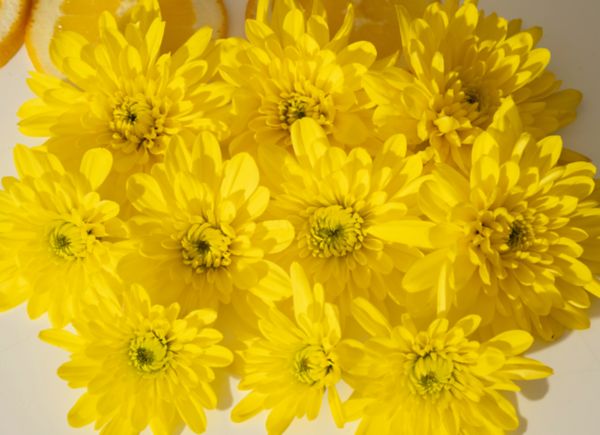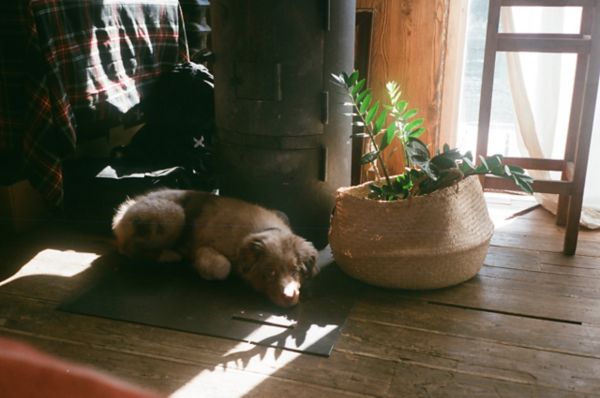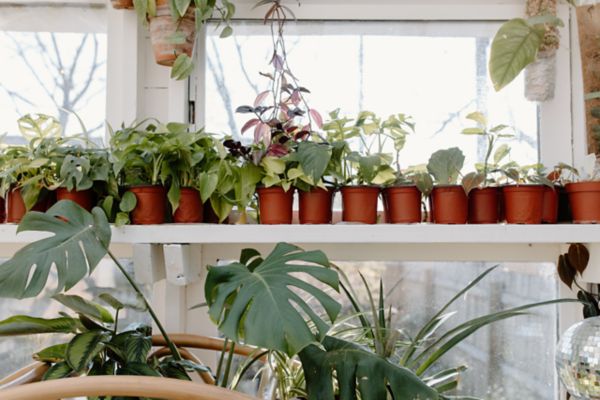How to a Swiss Cheese Plant
Authored by Leah Chester-Davis
Take one look at this plant and you will understand why Monstera’s common name is Swiss cheese plant. Its big bold leaves have holes in them. The look is dramatic and fun and lends a tropical touch to any room. Its striking appearance and ease in growing and maintenance are the reasons the plant is so popular.
The heart-shaped, distinctive foliage is glossy green, perforated, deeply lobed, and can get as large as 1 to 2 feet long and a foot or so wide. The leaves have a leathery texture and are held on 2- to 3-feet-long petioles. When the plants are young, they will not have perforations or cut leaves, but these features will begin to appear as the leaves mature. Variegated cultivars such as ‘Albo’ and ‘Variegata’ are popular. ‘Little Swiss’ (Monstera adansonii) is a smaller cultivar.
This woody, broadleaf evergreen has a vining habit and likes to climb. It is an epiphyte, which means it uses another plant for support but doesn’t use its water or nutrients. It also grows as an understory plant in its native habitat of Central America, until it finds a tree to climb. Many of the Swiss cheese plants in the stores are full, floor-type specimens, thanks to either their young age or to pruning. If you wish to grow the plant as a climber, it will need some type of support or structure.
About swiss cheese plant
| Botanical name: | Monstera deliciosa |
| Common name: | Swiss cheese plant |
| Plant type: | Vine; houseplant |
| Size: | 6 to 8 feet as houseplant; 30 to 70 feet in natural habitat |
| Sun exposure: | Part shade |
| Soil type: | Well-drained with plenty of organic matter; peat-based potting mix for houseplants |
| Soil pH: | 5.5 to 7 |
| Hardiness zones: | 10 to 12 |
| Average first frost: | Varies by region |
| Average last frost: | Varies by region |
| Container friendly: | Yes |
| Beginner friendly: | Yes |
Growing
This plant needs plenty of moderate, indirect light indoors, at least 6 hours each day, and more if it is a variegated cultivar. Light helps variegated plants develop and keep the colors in their foliage. Without adequate light, the plant may stay a solid green.
In Zones 10 to 12, Swiss cheese plant is grown as an ornamental in the landscape. In other zones, it is a popular houseplant. It does best in a range between 65- and 85-degrees F. It will not be happy in cooler temperatures. It can handle average humidity. Misting the leaves can be beneficial, helping to increase the humidity in dry rooms.
Swiss cheese plant has a vining habit, using aerial roots to attach to structures such as a trellis or moss pole. If growing it as a climbing plant, supports will also help prevent the heavy stems from breaking. If you prefer a full, bushy floor plant, prune it in the spring.
In its natural habitat or when grown outdoors, the plant flowers and produces an edible fruit that is said to have a flavor similar to a mix between a pineapple and banana. As a houseplant, it rarely has flowers or fruits.
Planting
If in Zones 10 to 12, this plant can be planted in most any type of well-drained soil. Keep it out of areas that flood. Florida Extension recommends removing a 3- to 10-foot diameter of grass, then dig a hole that is 3 to 4 times the diameter and 3 times as deep as the container the plant came in. It is not necessary to add fertilizer, compost, or topsoil to the planting hole. If adding topsoil or compost to the native soil, mix it with the excavated soil in a 1 to 1 ratio. When placing the vine in the hole, place it so that the top of the soil media from the container is level with or slightly above the surrounding soil level. Fill the soil around the roots and tamp down gently, then water.
If growing Swiss cheese plant as a houseplant, plant in a rich, well-drained, peat-based potting mix in a container with drainage holes. Allow the soil to dry some between waterings. Water every 1 to 2 weeks when the top 2 inches of soil dries out. During the fall and winter, water requirements will lessen. On occasion, just like with most other smooth-leaved houseplants, it is helpful to wipe the dust off the leaves on a regular basis. Use a soft, clean cloth and wipe the leaves gently. As the plant grows, it will need repotting on occasion, about every 2 to 3 years. The best time to repot most houseplants is in the spring.
Dust off the leaves of your monstera on occasion using a soft, clean cloth.
Fertilizing
- If growing in the landscape in Zones 10 to 12, Florida Extension recommends applying ¼ pound of a complete dry fertilizer mix with 20 to 30 percent of the nitrogen from organic sources. Repeat every 8 weeks (about 2 months) the first year. Gradually increase the amount of fertilizer thereafter but decrease the application frequency to 2 to 3 times per year.
- In growing as a houseplant, fertilize once a month during the spring and summer. If you wish for a faster growing plant, fertilize more often. Use a houseplant fertilizer and follow label directions.
Controlling Pests, Diseases, and Other Problems
- Monsteras do not have serious pest or disease problems. If mealybugs appear, which are clear with small cotton-like masses, they can be swiped with a cotton swab that is dipped in rubbing alcohol. They likely will appear on the underside of the leaves so check the plant on occasion. In addition, the plant may benefit by more humidity to help control insects.
How to propagate swiss cheese plant
It is easy to start new plants with a cutting if it has a node and axillary bud. A node is the point where a leaf develops. Dip the cutting in a rooting hormone and then place in a well-drained rooting medium and keep it moist. Because the cuttings are top heavy, use a sturdy container. It can also be air layered or divided. The variegated varieties may be harder to root but if you have one, it is worth a try. It can take 2 to 4 weeks for roots to form and 2 to 3 months before new leaves appear.
Expert Tips
- This plant is sometimes called a split-leaf philodendron. Though it is not actually a philodendron, monsteras and philodendrons are closely related.
- Swiss cheese plants can get quite large so invest in a heavier container to prevent problems with it tipping over.
- Like most houseplants, Swiss cheese plants can benefit by moving them outdoors in the summer. Give it a spot with light shade or filtered sunlight, keeping it out of the hot sun, which may scorch its leaves. Bring it back indoors before cold weather.
Frequently asked questions
Why are the leaves on my plant wilting and falling off?
Check the water level on your plant. Too much water can result in leaves wilting and leaves that are yellow and brown. Check the soil to about ½ to 1 inch. If it feels wet or even slimy you may need to change the soil. The Brooklyn Botanic Garden also recommends pruning the bad roots and using a fungicide such as neem oil on the roots to help prevent further rot.





